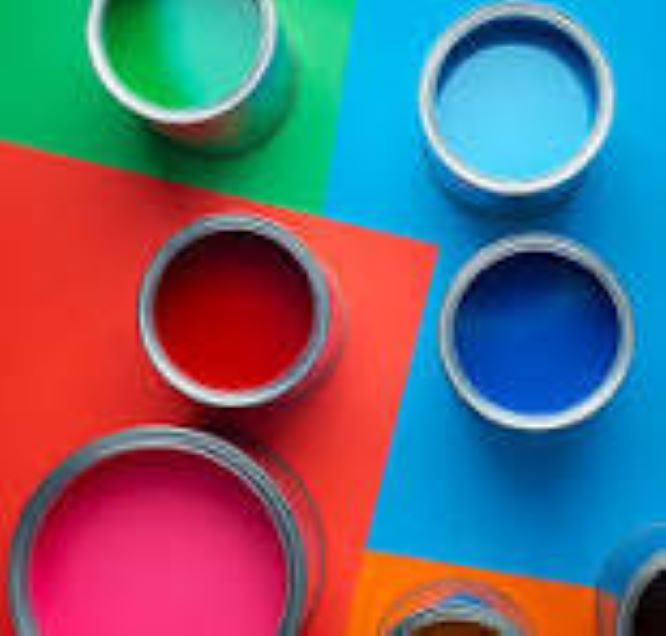Have you ever walked into a room and felt instantly calm, energized, or even overwhelmed? The secret often lies in the interior paint colors. Choosing the right palette for your home is more than just a design decision—it’s a way to influence mood, enhance space perception, and even boost your property’s value. Whether you’re planning a full home makeover or just refreshing a single room, this guide will help you navigate the world of interior paint colors with confidence. From understanding color psychology to exploring the latest trends, we’ve got you covered.
Table of Contents
- Understanding Interior Paint Colors
- Why Paint Color Matters in Interior Design
- Key Factors to Consider Before Choosing Interior Paint Colors
- The Psychology of Interior Paint Colors
- Popular Interior Paint Color Trends for 2025
- Classic and Timeless Interior Paint Colors
- Room-by-Room Guide to Interior Paint Colors
- Choosing the Right Interior Paint Finishes
- How Lighting Affects Interior Paint Colors
- Tips for Testing Interior Paint Colors
- Common Mistakes to Avoid with Interior Paint Colors
- Frequently Asked Questions
- Conclusion and Final Recommendations
1. Understanding Interior Paint Colors
What Are Interior Paint Colors?
Interior paint colors are specially formulated paints designed for indoor use. Unlike exterior paints, they prioritize aesthetics, durability, and ease of cleaning over weather resistance. These colors can transform a space, making it feel larger, cozier, or more vibrant, depending on the shade and finish.
The Science Behind Color Creation
Interior paint colors are created using pigments, which are finely ground particles that give paint its hue. By mixing primary colors (red, blue, yellow) with tints (white) or shades (black), manufacturers create an endless array of options. Understanding the color wheel can help homeowners choose complementary or contrasting colors for a cohesive look.
2. Why Paint Color Matters in Interior Design
The colors you choose for your walls have a profound impact on your home’s atmosphere. For instance, soft blues and greens can create a calming environment, while bold reds and yellows energize a space. Beyond mood, interior paint colors also affect how large or small a room feels and can even influence your home’s resale value. Neutral tones like beige or gray are often preferred by buyers, as they provide a blank canvas for personalization.
3. Key Factors to Consider Before Choosing Interior Paint Colors
When selecting interior paint colors, consider the following:
- Architectural Style: Traditional homes may suit classic tones, while modern spaces often embrace bold or minimalist palettes.
- Existing Décor: Your furniture, flooring, and artwork should complement the wall colors.
- Lighting: Natural and artificial light can dramatically alter how a color appears.
- Cohesive Flow: Ensure that colors transition smoothly between rooms for a harmonious feel.
4. The Psychology of Interior Paint Colors
Colors evoke emotions and can influence behavior. Here’s a breakdown of common color families:
- Neutrals: Calm and versatile, perfect for creating balance.
- Cool Tones: Blues and greens promote relaxation and peace.
- Warm Tones: Yellows, oranges, and reds add energy and warmth.
- Bold/Dark Colors: Deep hues like navy or charcoal create drama and coziness.
5. Popular Interior Paint Color Trends for 2025
This year’s trending interior paint colors reflect a focus on sustainability, wellness, and individuality. Popular shades include:
- Earthy Greens: Inspired by nature, these hues bring tranquility indoors.
- Soft Terracottas: Warm and inviting, perfect for living spaces.
- Muted Blues: A timeless choice that pairs well with neutrals.
- Rich Jewel Tones: Emerald, sapphire, and amethyst add a touch of luxury.
For more inspiration on trending shades, check out Behr’s 2025 Color Trends for professionally curated palettes perfect for every room.
6. Classic and Timeless Interior Paint Colors
While trends come and go, some colors remain perennial favorites:
- Whites: Crisp and clean, ideal for any room.
- Grays: A versatile neutral that works with modern and traditional styles.
- Beiges: Warm and inviting, perfect for living rooms and bedrooms.
- Soft Blues: Timeless and calming, great for bathrooms and bedrooms.
7. Room-by-Room Guide to Interior Paint Colors
Living Room
Opt for warm neutrals or muted greens to create a welcoming space. Consider an accent wall in a bold color to add depth and interest.
Bedroom
Choose soothing tones like soft blues, lavenders, or warm grays to promote relaxation. Accent walls behind the bed can add a touch of drama.
Kitchen
Bright whites or soft yellows can make kitchens feel clean and inviting. Pair with cabinetry in contrasting colors for a modern look.
Bathroom
Spa-like hues such as seafoam green or light gray create a serene atmosphere. For a bold statement, try navy or charcoal.
Home Office
Boost productivity with colors like sage green, light blue, or even a muted orange. Avoid overly bright or distracting shades.
Children’s Rooms
Playful colors like pastel pinks, blues, or yellows work well for younger kids. As they grow, consider more neutral tones with colorful accents.
Hallways and Entryways
Make a great first impression with warm neutrals or soft grays. Use lighter shades to brighten narrow spaces.
8. Choosing the Right Interior Paint Finishes
The finish you choose can impact both the look and durability of your paint:
- Matte: Great for hiding imperfections but less durable.
- Eggshell: A subtle sheen, ideal for living rooms and bedrooms.
- Satin: Durable and easy to clean, perfect for kitchens and bathrooms.
- Semi-Gloss: Reflective and moisture-resistant, great for trim and cabinetry.
- Gloss: High shine, best for accents and furniture.
9. How Lighting Affects Interior Paint Colors
Lighting plays a crucial role in how colors appear:
- Natural Light: North-facing rooms may feel cooler, while south-facing rooms are warmer.
- Artificial Light: LED lights can make colors appear cooler, while incandescent bulbs add warmth.
- Testing Tips: Always test paint swatches in different lighting conditions before committing.
10. Tips for Testing Interior Paint Colors
- Sample Swatches: Paint small sections of your wall or use sample boards.
- Observe Over Time: Check how the color looks at different times of the day.
- Compare Options: Test multiple shades side by side to find the perfect match.
11. Common Mistakes to Avoid with Interior Paint Colors
- Skipping Samples: Always test colors in your space before buying.
- Ignoring Undertones: Subtle undertones can clash with existing décor.
- Overlooking Lighting: Colors can look drastically different under various lighting conditions.
- Disjointed Flow: Ensure colors transition smoothly between rooms.
12. Frequently Asked Questions
How can I make a small room look bigger with paint?
Light colors like whites and pastels can make a room feel more spacious.
What interior paint colors increase resale value the most?
Neutral tones like beige, gray, and white are universally appealing to buyers.
How often should I repaint my home’s interior?
Every 5-7 years, or sooner if walls show wear and tear.
Can I mix and match paint brands?
While possible, it’s best to stick to one brand for consistency in finish and quality.
Which interior paint colors hide dirt and stains best?
Medium tones like taupe or gray are excellent at concealing dirt.
Conclusion and Final Recommendations
Choosing the right interior paint colors can transform your home, enhancing both its aesthetic appeal and functionality. Take the time to explore options, test samples, and consider factors like lighting and décor. Whether you’re drawn to timeless classics or bold trends, the perfect palette is within reach. Ready to start your painting journey? Contact a professional for expert advice or share your favorite color combinations in the comments below!



